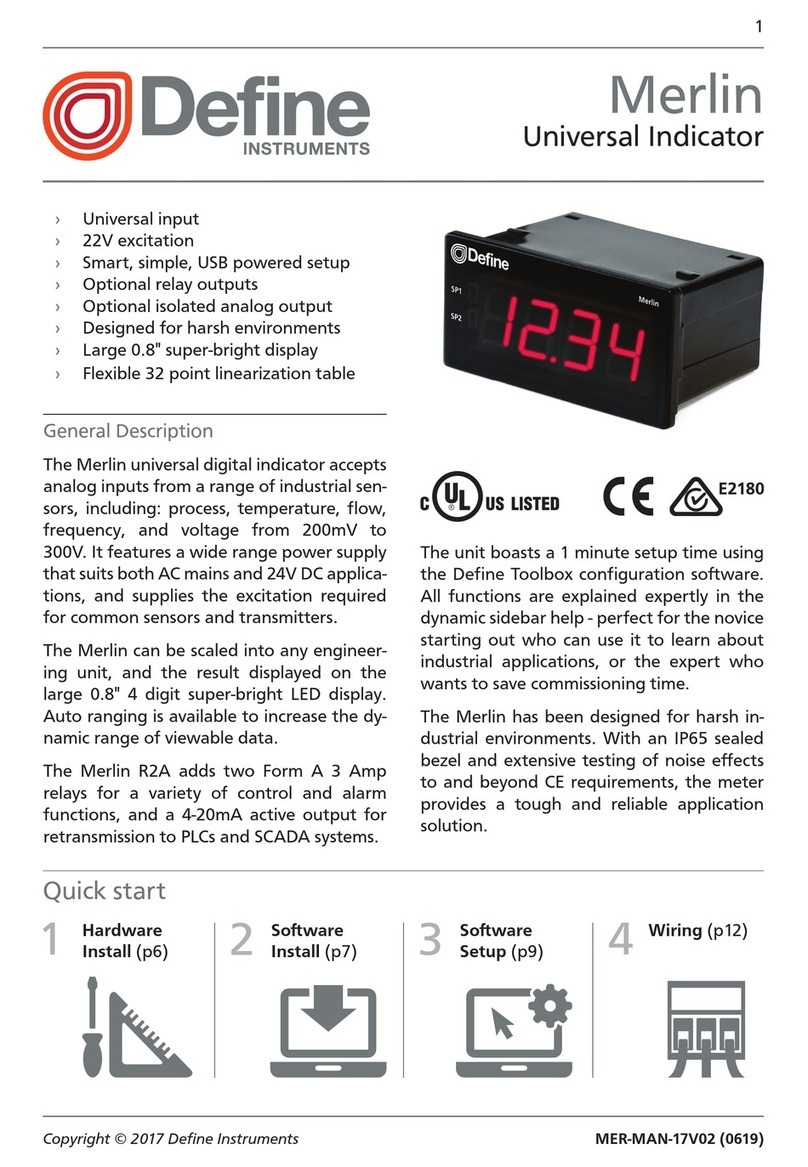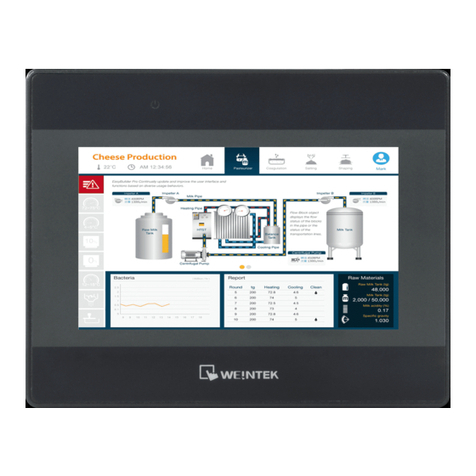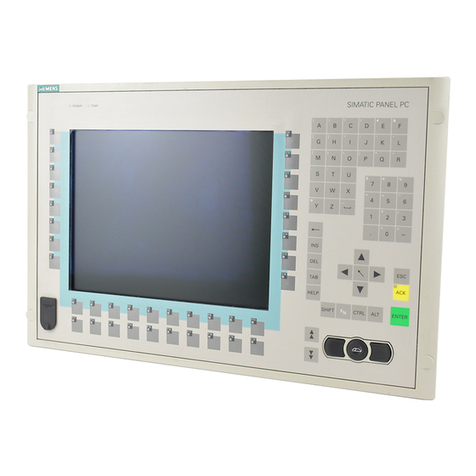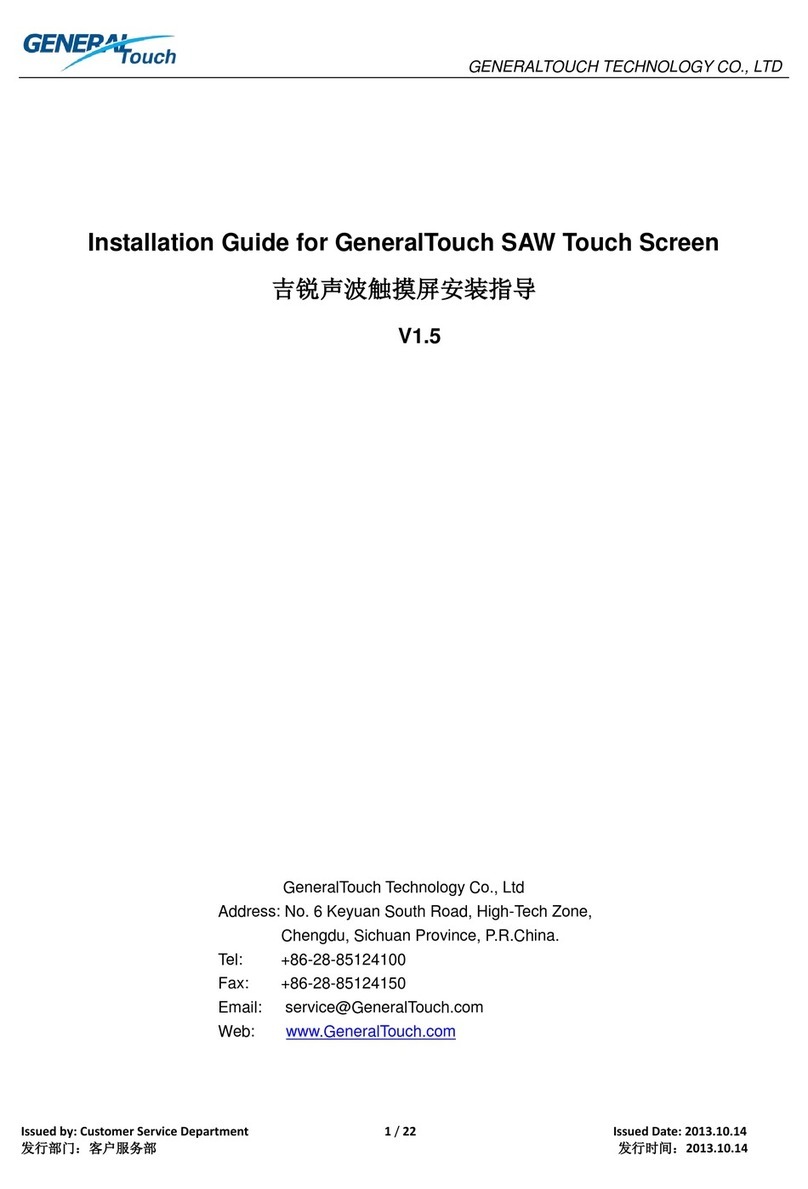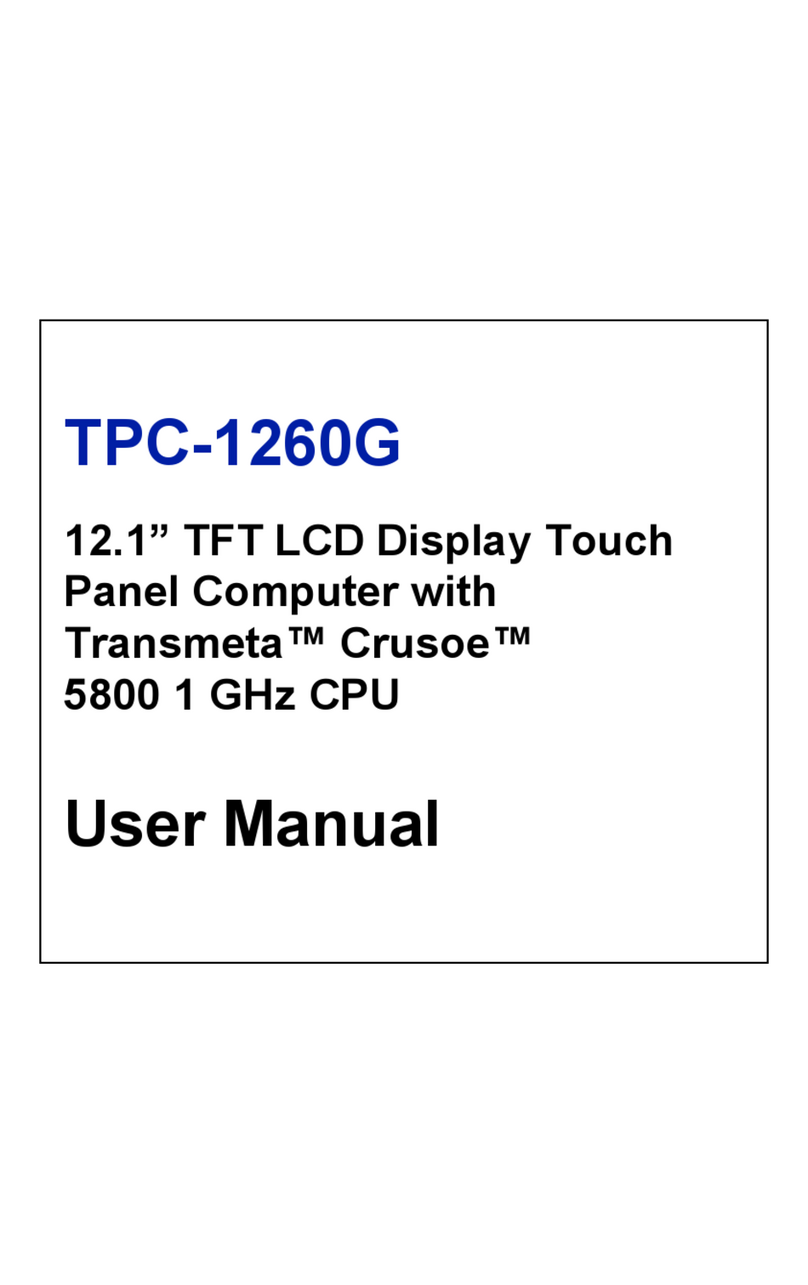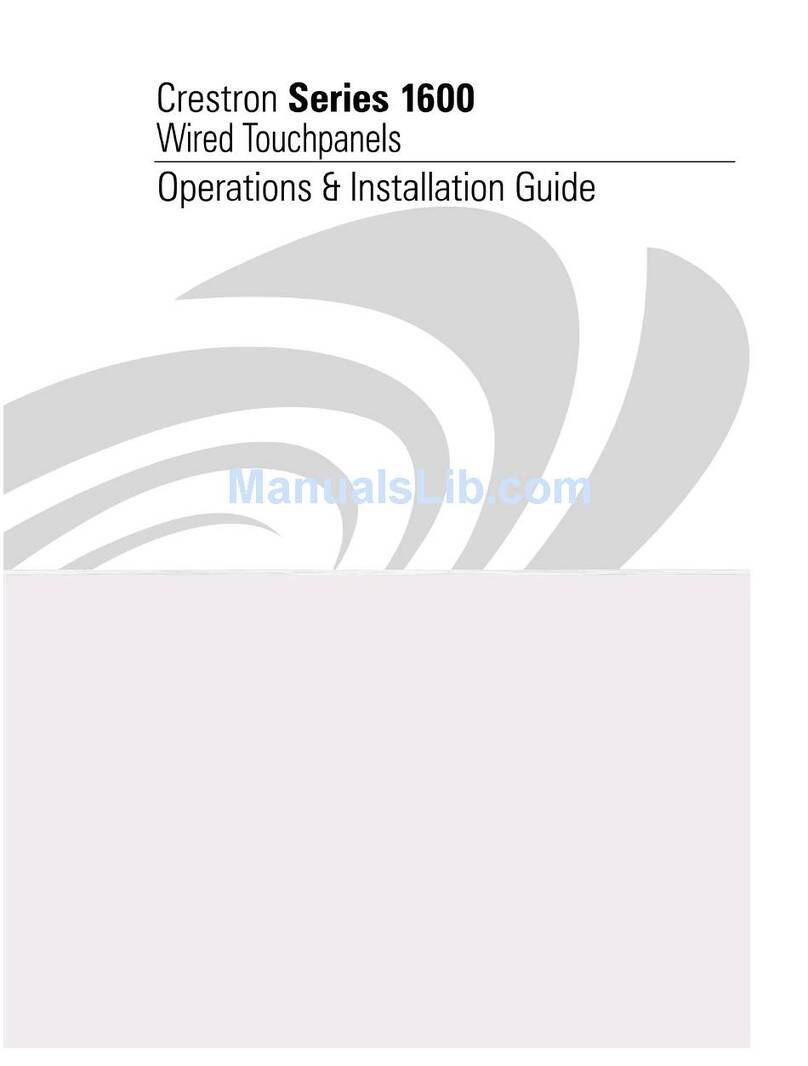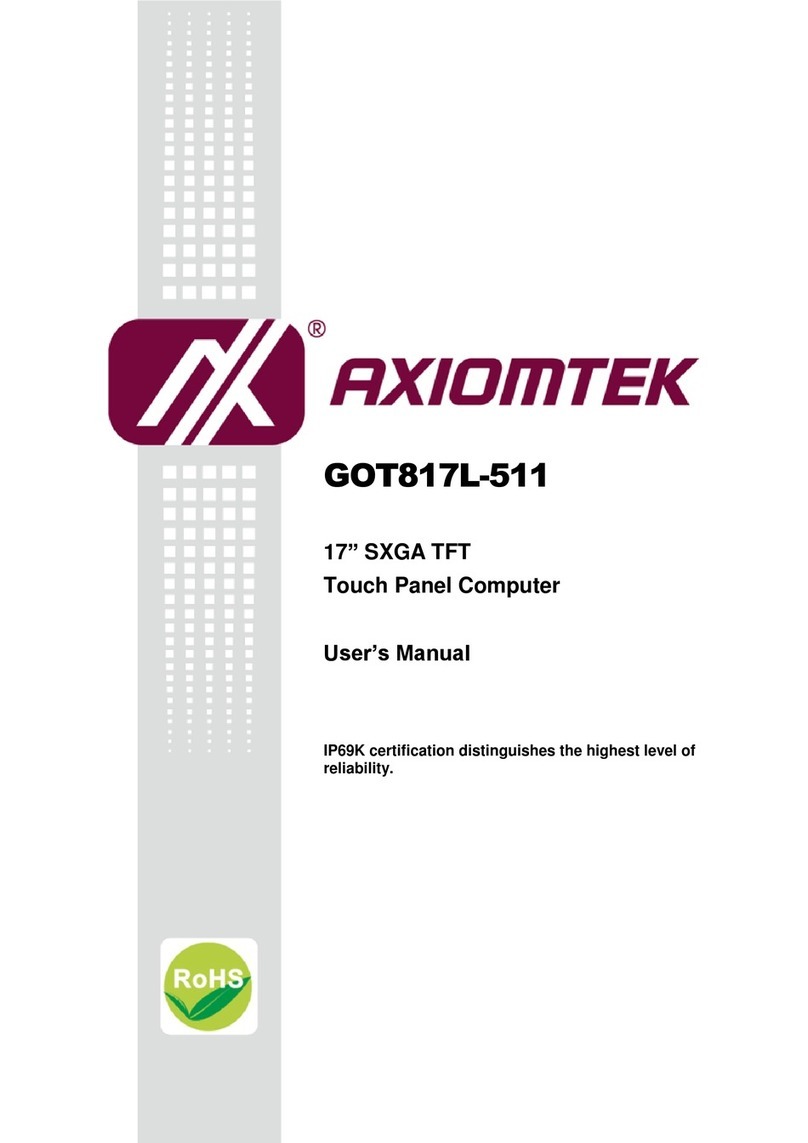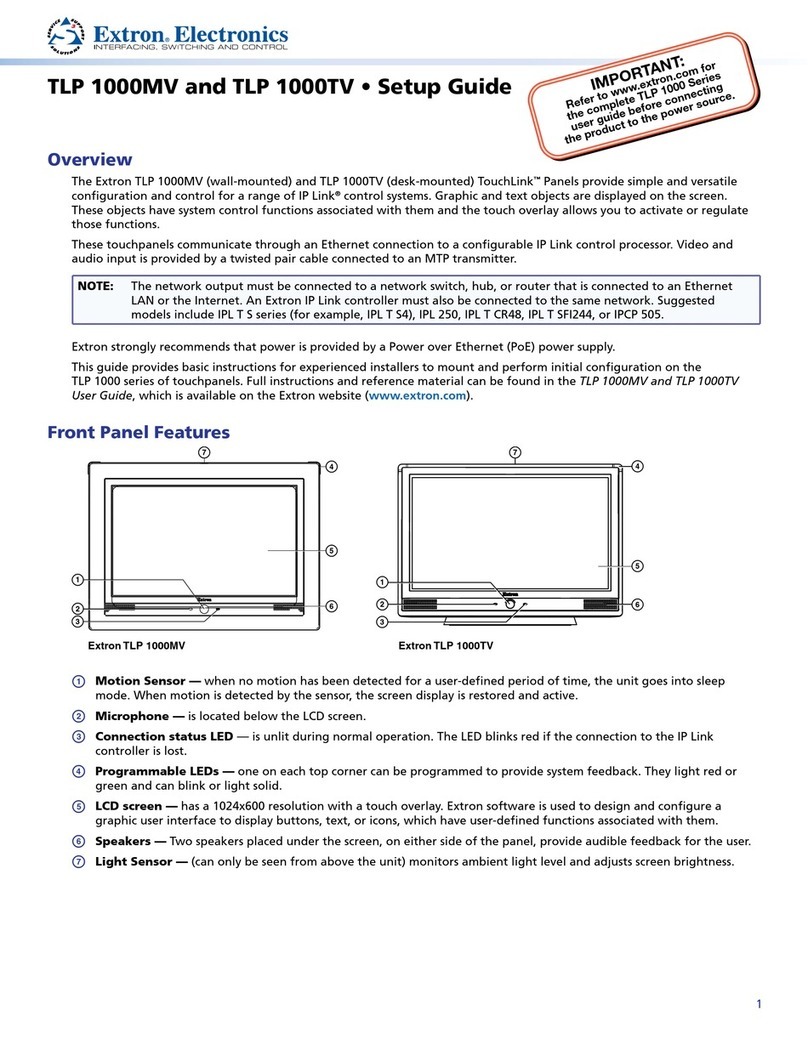Define Instruments Merlin User manual

MER-MAN-14V01 (1002)Copyright © 2014 Dene Instruments
1
Soware
Setup (p9)
Soware
Install (p7)
Hardware
Install (p6)
›Universal input
›22V excitation
›Smart, simple, USB powered setup
›Optional relay outputs
›Optional isolated analogue output
›Designed for harsh environments
›Large 0.8" super-bright display
›Flexible 32 point linearization table
General Description
The Merlin universal digital indicator accepts
analogue inputs from a range of industrial
sensors, including: process, temperature,
ow, frequency, and voltage from 200mV to
300V. It features a wide range power supply
that suits both AC mains and 24V DC appli-
cations, and supplies the excitation required
for common sensors and transmitters.
The Merlin can be scaled into any engineer-
ing unit, and the result displayed on the
large 0.8” 4 digit super-bright LED display.
Auto ranging is available to increase the dy-
namic range of viewable data.
The Merlin R2A adds two Form A 3 Amp
relays for a variety of control and alarm
functions, and a 4-20mA active output for
retransmission to PLCs and SCADA systems.
The unit boasts a 1 minute setup time using
the Dene Toolbox conguration soware.
All functions and features are explained ex-
pertly in the dynamic sidebar help - perfect
for the novice starting out who can use it to
learn about industrial sensors and applica-
tions, or the expert who wants to save com-
missioning time.
The Merlin has been designed for harsh in-
dustrial environments. With NEMA 4X/IP65
sealed bezel and extensive testing of noise
eects to and beyond CE requirements, the
meter provides a tough and reliable applica-
tion solution.
Merlin
Universal Indicator
Quick start
Wiring (p12)

MER-MAN-14V01 (1002) Copyright © 2014 Dene Instruments
2
Contents ................................................. 2
Order Codes ............................................ 2
Safety Notices ......................................... 3
1 - Specications .................................... 3
1.1 - General Meter Specications .... 3
1.2 - Display ....................................... 4
1.3 - Case Dimensions ....................... 5
2 - Hardware Installation ...................... 6
2.1 - Installation Instructions ............ 6
2.2 - Installation Environment .......... 6
3 - Soware Installation ....................... 7
4 - Soware Conguration ................... 9
Using ToolBox
4.1 - Bridge Key ................................. 9
4.2 - Using ToolBox ......................... 10
4.3 - ToolBox Interface Overview ..... 11
5 - Wiring ............................................. 12
5.1 - Wiring Overview ..................... 12
5.2 - EMC Installation Guidelines .... 12
5.3 - Back Panel ............................... 13
5.4 - Power Supply .......................... 13
5.5 - Sensor Input ............................ 14
5.6 - Analogue Output .................... 14
5.7 - Relay Outputs .......................... 14
5.8 - User Input ............................... 14
6 - Input Types ..................................... 15
6.1 - Thermocouple Input ............... 15
6.2 - RTD Input ................................ 16
6.3 - NTC Input ................................ 17
6.4 - Current Input .......................... 18
6.5 - Voltage Input .......................... 19
6.6 - Digital Pulse ............................. 21
6.7 - Potentiometer Input ............... 22
6.8 - AC Current Sensor ................... 23
7 - Maintenance ................................... 24
7.1 - Calibration ............................... 24
7.2 - Troubleshooting ...................... 24
A - Appendix A - EMC Test Results ...... 25
B - Appendix B - Warranty & ............... 27
User's Responsibility
CONTENTS
ORDER CODES
Merlin MER Universal Indicator
Universal Voltage UV 24–250V AC / 19.5–250V DC
Output R2A 2 x relay outputs, 1 x analogue output (4–20mA)
Merlin Universal
Voltage
Output
(Optional)
MER – UV – R2A

MER-MAN-14V01 (1002)Copyright © 2014 Dene Instruments
3
SAFETY NOTICES
For your safety and the prevention of damage to the Merlin unit and other equipment con-
nected to it, please read and carefully observe all safety regulations and instructions. Use
of this instrument in a manner not specied by the manufacturer may compromise the protec-
tion provided by the instrument.
This instrument should not be used to directly drive valves, motors, or other actuators, unless
equipped with appropriate safeguards. It is the responsibility of the user to indentify potential
hazards that may arise in the event of a fault to unit, and implement safeguards for the pre-
vention of harm to persons or equipment.
CAUTION
Risk of electric shock
CAUTION
Risk of danger
For your safety, please read complete instructions prior to installation and operation of
the Merlin. In particular, consult this manual in all cases where hazard symbols are marked
on your Merlin unit, in order to understand and avoid potential hazards. The safety of any
system incorporating this unit is the responsibility of the assembler of the system.
1SPECIFICATIONS
1.1 - General meter specications
Power
Power supply 24–250V AC / 19.5–250V DC,
47–63Hz, 6VA max
Isolation 2,300Vrms for 1min to all inputs
and outputs
Analogue input
Input Universal (see Section 6 for full input
specications and wiring)
Excitation power
Excitation 22V ±10% (25mA max)
Relay output OPTIONAL
Type 2x Form A relays
Isolation to sensor and user input com-
mons 2,300Vrms for 1min
Working voltage 240Vrms
Contact rating
One Relay energized: 3amps @ 120/240V AC
or 28V DC (resistive load)
3amps max total current with both relays
energized
Life expectancy 100K cycles min at full load
rating

MER-MAN-14V01 (1002) Copyright © 2014 Dene Instruments
4
1.2 - Display
Digits 4 digit red LED, 0.8" (20mm),
7-segment characters
Display range -1999 to 9999
Annunciators 2x setpoint indicator
LEDs (R2A model only)
NEMA 4X/IP65 sealed front bezel
User input OPTIONAL
One user input is available on R2A model
only. It can be programmed as a manual
relay reset switch or a latching switch
Max continuous input 20V DC
Isolation to sensor input common
Not isolated
Analogue output OPTIONAL
Type 1x 4–20mA or 20–4mA DC
Isolation to sensor and user input com-
mons 1,400Vrms for 1min
Working voltage 125V
Max output drive 20mA (600Ω max load at
12V DC)
Accuracy/repeatability 0.05% of FSO
Resolution 1μA
Temperature dri 30ppm/°C typical
Powered Self-powered (active)
Environmental conditions
Operating humidity 5–85%RH max
(non-condensing)
Operating temperature -10 to 50°C
Storage temperature -20 to 60°C
Altitude Up to 2,000m
Certications & compliances
EN 61326-1 Immunity to Industrial Locations
Emission CISPR 11 Class A (EN 61326)
Safety requirements for electrical equip-
ment for measurement control, and labora-
tory use:
EN 61010-1 General Requirements
EN 61010-2-030 Particular Requirements
for Testing and Measuring Circuits
NEMA 4X/IP65 Enclosure rating (face only)
Construction
Panel mount enclosure Rated for NEMA
4X/IP65 outdoor use. Installation Category
II, Pollution Degree 2. Flame resistant. Panel
gasket and mounting clips included.
Dimensions 48H x 95W x 62D (mm)
Cutout area 45x92mm ±.5 (1.77x3.62" ±.02)
Space behind panel 80mm (3.15") minimum
space required behind panel (includes space
for connectors/wiring)
Weight 195g (6.87oz)

MER-MAN-14V01 (1002)Copyright © 2014 Dene Instruments
5
1.3 - Case dimensions
95mm (3.74")
107mm (4.21")
91mm (3.58")
80mm (3.15") minimum
depth required behind panel
62mm (2.44")
22mm
(0.87")
4mm (0.16")
48
mm
(1.89")
44
mm
(1.73")
Connectors
& wiring

MER-MAN-14V01 (1002) Copyright © 2014 Dene Instruments
6
2HARDWARE INSTALLATION
2.1 - Installation instructions
The Merlin is designed to be mounted into
an enclosed panel, and meets NEMA 4X/
IP65 requirements when properly installed.
A Prepare the Panel Cutout to 92x45mm
±.5 (3.62x1.77" ±.02) as shown below.
B Remove the Mounting Clips from the
Merlin unit.
C Slide the Panel Gasket over the rear of
the unit to the back of the Bezel.
D From the front of the panel, insert the
Merlin into the Panel Cutout. Holding
the unit in place, engage the Mounting
Clips so that the tabs snap into place
over the notches on the case.
E To achieve a proper seal, tighten the
Screws evenly until the unit sits rmly
against the panel (torque to approxi-
mately 70N-cm [6.2 in-lbs]). Do not over-
tighten the screws.
Panel Bezel
Panel
Gasket
Mounting
Clips
Screws
92mm ±.5
(3.62″ ±.02)
45mm ±.5
(1.77″ ±.02)
Panel Cutout
2.2 - Installation environment
The Merlin should be installed in a location
that does not exceed the maximum operat-
ing temperature, and at a safe distance from
other devices that generate excessive heat.
The installation environment should provide
good air circulation to the unit.
The bezel, plastic casing and product label
may be cleaned, if required, using a so,
damp cloth and neutral soap product.
Continuous exposure to direct sunlight
should be avoided, as this may accelerate
the aging process of the bezel.

MER-MAN-14V01 (1002)Copyright © 2014 Dene Instruments
7
3SOFTWARE INSTALLATION
ToolBox oers a smart, no-fuss setup experience for your Merlin universal indicator. It features
USB powered programming (no power supply required!) and has been designed to simplify
and speed up conguration.
You must install ToolBox before connecting the Merlin to your computer. If you have already
connected the meter using the Bridge Key, please disconnect it before continuing.
A Download the latest version of ToolBox from
www.deneinstruments.com/toolbox
For ease of access, we recommend saving the install le on your desktop. If you cannot locate
the install le, check whether your browser has saved it in your Downloads folder.
B Extract the install le from the zip folder. Right-click on the zip folder and choose 'Extract
All', (or extract the le using another extraction utility of your choice).
C Double-click on the extracted .msi install
le. This will launch the ToolBox installer.
Depending on your security settings, a
'Security Warning' dialogue may appear.
If you see the security message, click
'Run'.

MER-MAN-14V01 (1002) Copyright © 2014 Dene Instruments
8
D The ToolBox setup wizard will
launch.
Click 'Next' to get started.
E The wizard will also ask for
conrmation that you wish
to begin the installation.
Click 'Next' to continue.
F The wizard will prompt you to
select an installation folder.
You may accept the default
installation folder, or select
an alternative location by
clicking 'Browse'.
Click 'Next' to continue.
G The install wizard will now
install ToolBox.
Please wait. This process usu-
ally takes 2-3 minutes, but
may take longer in some
situations.
H When the installation has suc-
cessfully completed, the fol-
lowing dialogue will appear.
Click 'Close' to exit.
The installer will place an icon
on your desktop for easy ac-
cess to ToolBox.
The downloaded .zip and
.msi installer les are no
longer needed, and may be
deleted if desired.

MER-MAN-14V01 (1002)Copyright © 2014 Dene Instruments
9
4SOFTWARE CONFIGURATION USING TOOLBOX
4.1 - Bridge Key
Install the ToolBox soware (see Section 3) before connecting the Merlin to your PC.
Then connect the Merlin to your computer's USB port using the Bridge Key (supplied sepa-
rately), as shown below. The interface cable connects to the USB programming jack on the
unit's back panel (see 5.3D). A USB extension cable is supplied for your use if required - this is
oen used for convenience in accessing USB ports located at the back of the computer.
USB Bridge Key
Interface
Cable
USB Extension Cable
(If Necessary)
PC Connection
INSTALL SOFTWARE FIRST!
Merlin
Universal
Indicator
CAUTION
Risk of damage to equipment or PC
Ensure that all connections between the Bridge Key and your Merlin are secure. Connect-
ing your indicator with cables that are not rmly 'pushed in' will result in connection faults,
and in extreme cases could cause damage to your computer.
Always use the windows ‘Safely remove hardware’ function before unplugging the
Bridge Key from your computer.

MER-MAN-14V01 (1002) Copyright © 2014 Dene Instruments
10
4.2 - Using ToolBox
The ToolBox soware enables full conguration of your Merlin universal indicator. To set up
your indicator, only the Bridge Key is required - you do not need to supply power.
ToolBox features a comprehensive help panel that will guide you through the setup of your
Merlin universal indicator. Helpful hints and explanations will appear when you adjust a
setting using the ToolBox controls.
There are three main navigation pages/tabs:
›Input/Output: Input mode/range, Scaling/offset, Display, Retransmission scaling
›Setpoints: Alarm control/mode, Setpoint activation points, advanced modes
›Advanced: Load/save configuration, Create configuration certificate
A Double-click the ToolBox icon on your desktop to launch the ToolBox program.
B With the Merlin connected to your computer's USB port (see 4.1), click the green
'Connect' button. This will scan your computer's Com ports and automatically connect to
your device.
Connection problems?
ToolBox will auto-detect and connect to the Merlin when you click the 'Connect' button. If you
have problems establishing a connection, please check the following:
›Ensure that all connections between the device and your computer are secure. The main
interface cable must be fully inserted into both the USB programmer and the Merlin's
programming port. Press firmly.
›Try disconnecting and reconnecting the Merlin USB, or using a different USB port on
your computer.
›Disconnect any additional compatible devices. The software auto-detect feature does
not work if multiple Merlins are connected simultaneously.

MER-MAN-14V01 (1002)Copyright © 2014 Dene Instruments
11
Main Navigation Tabs
Input/Output, Setpoints, and Advanced conguration pages. (ToolBox will detect your
meter outputs and will only display relevant tabs.)
Control Area
Main control area for conguring your meter.
Any changes made in this area will bring up
the Apply Bar (see below)
Connection Panel
Connect/disconnect buttons
Connection status
Live display
Apply Bar
Appears if you have made any changes in the
Control Area. ToolBox will not allow you to browse
to a new tab in the Main Navigation with unap-
plied changes to your conguration.
Help Panel
Diagrams, explanations, and
helpful tips will automatically
appear in this panel as you
congure your meter.
4.3 - ToolBox interface overview

MER-MAN-14V01 (1002) Copyright © 2014 Dene Instruments
12
5WIRING
5.1 - Wiring overview
Electrical connections are made via plug in
terminal blocks at the rear of the meter. All
conductors must conform to the meter's
voltage and current ratings, and be suitably
rated for the expected temperature range to
be incurred.
When wiring the meter, check all connec-
tions by comparing the terminal numbers
shown on the meter label against the appro-
priate wiring diagrams in this manual (5.3–
5.8 and Section 6), or in the Dene ToolBox
soware. Strip the wire, leaving around
0.25" (6mm) of bare lead exposed. If you are
using stranded wire, this should be tinned
with solder. Insert the lead into the correct
plug in the correct position, and tighten
until the wire is secure. Verify tightness by
pulling on the wire.
Follow all local codes and regulations when
wiring and installing the meter. Each ter-
minal is rated to accept one wire from #14
AWG (2.5mm) to #20 AWG. However it is
also possible to accept two #18 AWG wires,
or up to four #20 AWG wires.
5.2 - EMC installation guidelines
The Merlin has been designed to cope
with large EMC disturbances. This has been
achieved by continual testing and improve-
ment of ltering and layout techniques over
many years.
The Merlin not only meets CE noise require-
ments, but surpasses them in many tests.
(For full details and test results, please see
Appendix A.)
However in some applications with less
than optimum installations and large power
switching, the EMC performance of the
Merlin can be further improved, by:
A Installing the Merlin in an earthed metal
enclosure. This is particularly useful if
the control box is mounted close to
large power switching devices like con-
tactors. Every switching cycle there is a
possibility of generating a large amount
of near eld radiated noise. The metal
enclosure acting as a faraday cage will
shunt this radiation to ground and away
from the Merlin. Further improvements
can be made with this type of noise by
increasing the physical distance from
the power devices. For example, increas-
ing the control box distance from 6” to
12” from the noise source will reduce
the noise seen by the control box by a
factor of 4. Probably the cheapest and
best results in this situation could be
obtained by adding RC snubbers to the
contactors or power switches.
B Using shielded cable on sensitive input
and control signal lines. Good results can
be obtained by grounding the shields to
the metal enclosure close to the entry
point. All cables act as aerials and pick
up unwanted R.F. radiated signals and
noise; the earthed shield acts as a fara-
day cage around the cables, shunting
the unwanted energy to ground. Shields
can also help with capacitively coupled

MER-MAN-14V01 (1002)Copyright © 2014 Dene Instruments
13
noise typically found in circumstances
when signal cable is laid on top of noisy
switching power cables. Of course in
this case you are better o to keep sepa-
rate signal and power lines.
C Laying cable on earthed cable trays can
also help reduce noise seen by the me-
ter. This is particularly useful if there are
long cable runs, or the unit is close to ra-
diating sources such as two way radios.
D The relay outputs of the Merlin have
built in MOVs to help reduce EMI when
switching inductive loads. EMI can fur-
ther be reduced at the load by adding
snubbers for AC signals or a yback di-
ode for DC coils.
5.3 - Back panel
The back panel of the Merlin may have up to ve screw terminals (A, B, C, E & F) and one USB
programming jack (D). Ports C, E and F are installed on the R2A model only.
ASensor input
(Pins 1–6, See Section 6)
BPower supply
(Pins 7–8, See 5.4)
CAnalogue output
(Pins 9–10, See 5.6)
DUSB programming jack
(See Section 4)
E User input
(Pins 11–12, See 5.8)
FRelay outputs
(Pins 13–16, See 5.7)
5.4 - Power supply
See 5.3B, pins 7–8
The Merlin features a wide range Power Supply that suits both AC
mains and 24V DC applications. The Merlin uses a full bridge rectier, so
it is not sensitive to polarity for DC power inputs.
CAUTION
Risk of electric shock.
AC power supplied to the meter must be protected by a 10A cir-
cuit breaker. DC power supplied to the meter must be protected
by a 1A, 250V fuse.

MER-MAN-14V01 (1002) Copyright © 2014 Dene Instruments
14
5.5 - Sensor input See 5.3A, pins 1–6
The Sensor Input terminal can be wired to suit numerous input types. See Section 6 for input
wiring, or refer to the ToolBox help panel as you are conguring the unit.
5.6 - Analogue output (If installed)
See 5.3C, pins 9–10
If your model includes Analogue Output, wire it as shown (right).
The analogue output can be scaled to suit your application using the
ToolBox soware.
5.7 - Relay outputs (If installed)
See 5.3F, pins 13–16
If your model includes Relay Outputs, wire them as shown (right). The
setpoints can be congured using ToolBox for a variety of alarm or con-
trol functions.
5.8 - User input (If installed)
See 5.3E, pins 11–12
If your model includes Relay Outputs, then a User Input is also pro-
vided. This can be connected to a switch as shown, to perform manual
relay reset and latching functions. These options are fully congurable
using the ToolBox soware.
CAUTION
The User Input common is NOT isolated from the Sensor Input.
In order to preserve the safety of the meter application, the User
Input common must be suitably isolated from hazardous live earth
referenced voltages; or the User Input common must be at protec-
tive earth ground potential.
If not, hazardous live voltage may be present on the User Input
and the User Input common terminals. Appropriate considerations
must then be given to the potential of the User Input common
with respect to earth common.

MER-MAN-14V01 (1002)Copyright © 2014 Dene Instruments
15
6INPUT TYPES
CAUTION
Risk of electric shock. Dangerous and lethal voltages may be present on the terminals of
the meter. Please take appropriate precautions to ensure safety.
CAUTION
Risk of danger. The sensor input can potentially oat to dangerous and unexpected volt-
ages depending on what external circuit it is connected to. Appropriate considerations
must be given to the potential of the sensor input with respect to earth common.
6.1 - Thermocouple input
Thermocouple types
B, E, J, K, N, R, S, T
Input impedance 1MΩ min
TC lead resistance 100Ω max
Cold junction comp. -10 to 70°C
Accuracy E, J, K, N, T: < ±1°C.
B, R, S: < ±2°C.
Temperature dri
E, J, K, N, T: < ±0.05°C/C.
B, R, S: < ±0.2°C/C.
Sensor break output drive
Function high upscale/low downscale
CJC error < ±1°C
Response time 400msec
Temperature (thermocouple)
The thermocouple is one of the most
common temperature sensors used in
industry. It relies on the Seebeck coe-
cient between dissimilar metals.
The thermocouple type is selected with
reference to the application tempera-
ture range and environment. The most
common thermocouple types for general
purpose applications are J and K type.
Supported thermocouple types/ranges
K-200°C (-328°F) 1372°C (2502°F)
B0°C (32°F) 1820°C (3308°F)
E-100°C (-148°F) 1000°C (1832°F)
J-200°C (-328°F) 1000°C (1832°F)
R-50°C (-58°F) 1760°C (3200°F)
S-50°C (-58°F) 1760°C (3200°F)
T-200°C (-328°F) 400°C (752°F)
N-180°C (-292°F) 1300°C (2372°F)

MER-MAN-14V01 (1002) Copyright © 2014 Dene Instruments
16
6.2 - RTD input
RTD input Pt100 or Pt1000 DIN 3-wire
type (2-wire can be used with oset trim)
Pt100 lead wire resistance 50Ω/wire max.
0.02% FSO oset error per Ω of lead resist-
ance mismatch
Pt1000 lead wire resistance 20Ω/wire
max. 0.002% FSO oset error per Ω of lead
resistance mismatch
Sensor current 0.3mA nominal
Sensor break output drive
Function high upscale/low downscale
Accuracy Better than 0.2°C
Temperature dri <0.007°C/C
Response time 400msec
Temperature (RTD)
The RTD (standing for Resistance
Temperature Device) is highly stable and
accurate, and is fast becoming the most
popular temperature sensor in industry.
Oen referred to as Pt100 and Pt1000,
the Pt represents platinum (the dominant
metal in its construction), and 100/ 1000 is
the resistance in ohms at 0°C.
Supported RTD types/ranges
Pt100 -200°C (-328°F) 320°C (608°F)
Pt1000 -200°C (-328°F) 320°C (608°F)

MER-MAN-14V01 (1002)Copyright © 2014 Dene Instruments
17
6.3 - NTC input
NTC -50 to 125°C (various thermistors)
Sensor types 10K Beta 3984/3435
Response time 100msec
Accuracy Better than 0.4°C
Temperature dri <50ppm/°C
Temperature (NTC)
NTC (Negative Temperature Coecient),
is a particular type of thermistor.
NTC's are popular in the HVAC industry
due to their low cost, but have a limited
temperature range which makes them less
popular in general industry.
The biggest issue with their general
acceptance is that there is no standard
that covers inter operability between dif-
ferent thermistor manufacturers.
Supported NTC types/ranges
10K Beta 3984 -55°C (-67°F) 125°C (257°F)
10K Beta 3435 -50°C (-58°F) 110°C (230°F)

MER-MAN-14V01 (1002) Copyright © 2014 Dene Instruments
18
6.4 - Current input
Range 0/4–20.000mA
USB prog zero 0–±99% of span
Field prog span 1μA–24mA DC
Input resistance 10Ω
Max over-range 50mA DC continuous
Linearity and repeatability
<±0.02% FSO typical
Temperature dri <50ppm/°C
Response time 100msec
0/4–20mA DC
0/4–20mA DC is the most commonly used
analogue signal in industry, and is univer-
sally accepted. As a current loop, it is unaf-
fected by voltage drops in cables, and can
be transmitted over long distances with-
out signal degradation.
4–20mA DC, loop powered
transmitter
The meter can provide power to a loop
powered transmitter, and at the same
time measure the signal. This congura-
tion is ideal for when there is a long dis-
tance between the sensor and the meter.
0/4–20mA DC, 3 or 4 wire transmitter
The meter can provide up to 25mA to
power an external 3 or 4 wire transmitter,
and at the same time measure the signal.

MER-MAN-14V01 (1002)Copyright © 2014 Dene Instruments
19
6.5 - Voltage input
Ranges ±200mV, –200mV to 1V, 0–10V,
±10V, –10 to 30V, 0–300V
USB prog zero 0–±99% of span
USB prog span 95% of FSO
Input resistance 1MΩ min
Linearity and repeatability
<±0.02% FSO typical
Temperature dri <50ppm/°C
Response time 100msec
±200mV DC
For low signal applications the meter sup-
ports a ±200mV DC range. Typical applica-
tions include measuring large DC currents
using external current shunts.
-200mV to 1V DC
A -200mV to 1V range is provided for
interfacing to sensors and other elec-
tronic apparatus that provide this output.
0–10V DC
0–10V DC is a common process signal gen-
erated by transmitters, meters and PLCs.
It would normally be scaled into engineer-
ing units by the meter.
±10V DC
±10V DC is a common process signal gen-
erated by transmitters, meters and PLCs. It
would normally be scaled into engineering
units by the meter.

MER-MAN-14V01 (1002) Copyright © 2014 Dene Instruments
20
-10 to 30V DC
This is a general purpose voltage measur-
ing range, typically used to measure bat-
tery voltages, power supply outputs etc.
0–300V DC
This higher voltage general purpose range
is typically used to measure battery volt-
ages, power supply outputs, etc.
CAUTION
Risk of electric shock
Exercise extreme caution when
handling high voltage inputs.
Other manuals for Merlin
1
Table of contents
Other Define Instruments Touch Panel manuals
Popular Touch Panel manuals by other brands
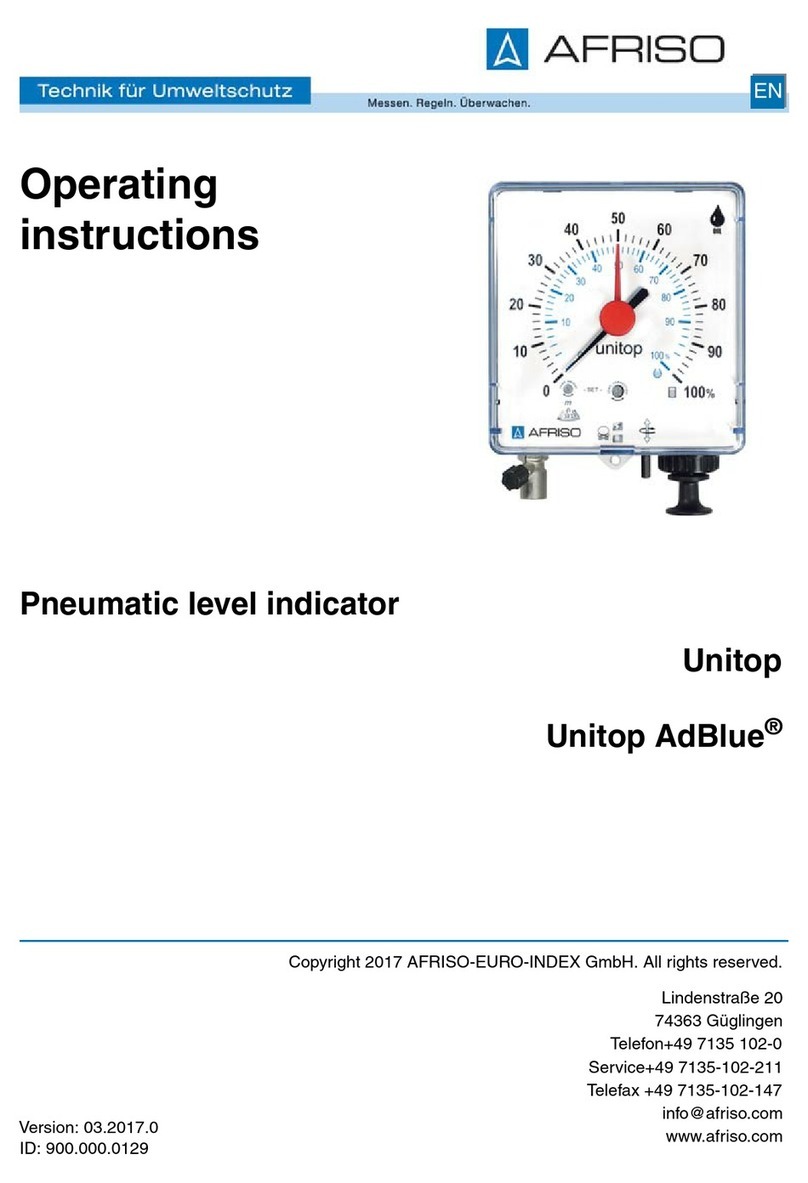
Afriso EURO-INDEX
Afriso EURO-INDEX Unitop AdBlue operating instructions

Kindermann
Kindermann TD-11 Series quick start guide

Inovalley
Inovalley MID106N user manual

GE
GE IC754VBI12MTD user manual

Crestron
Crestron QM-FTCC-TPS4 Operations & installation guide
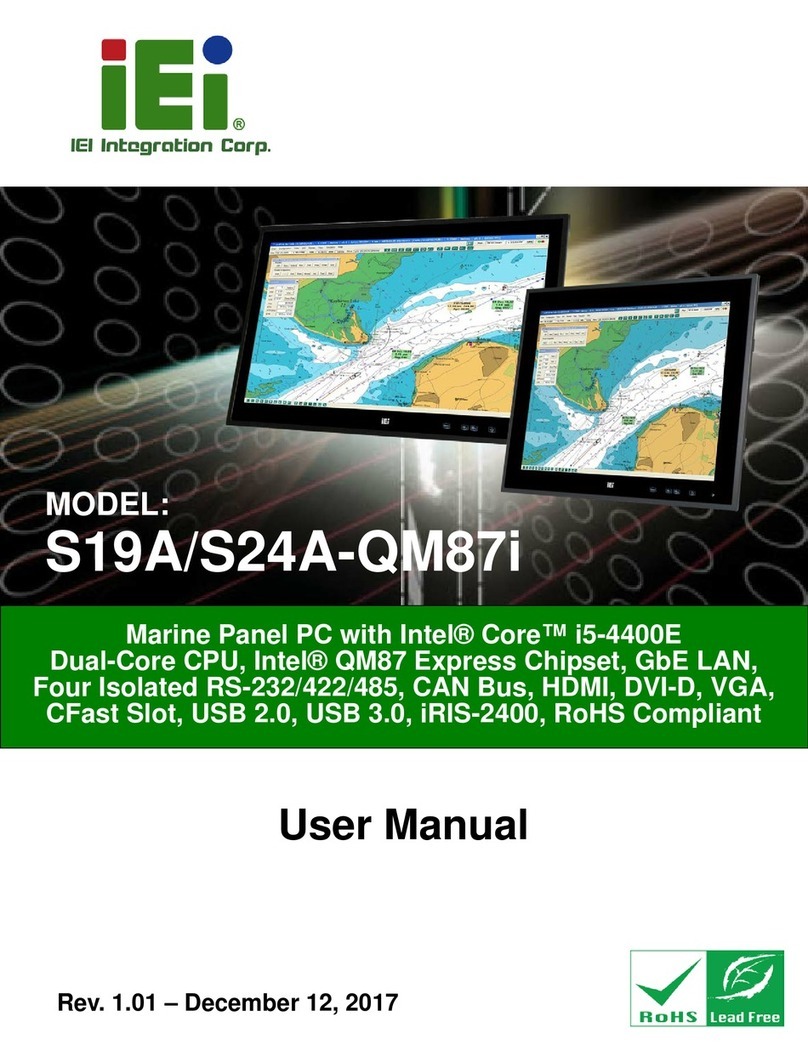
IEI Technology
IEI Technology S24A-QM87 user manual
